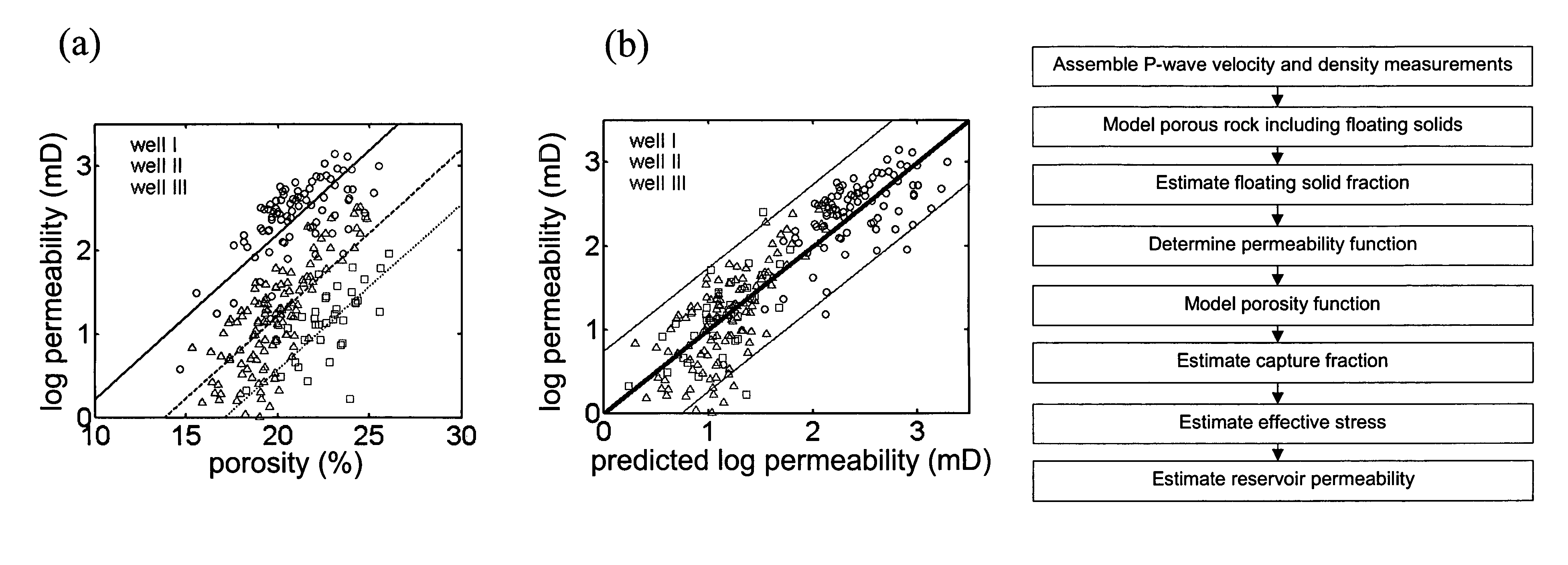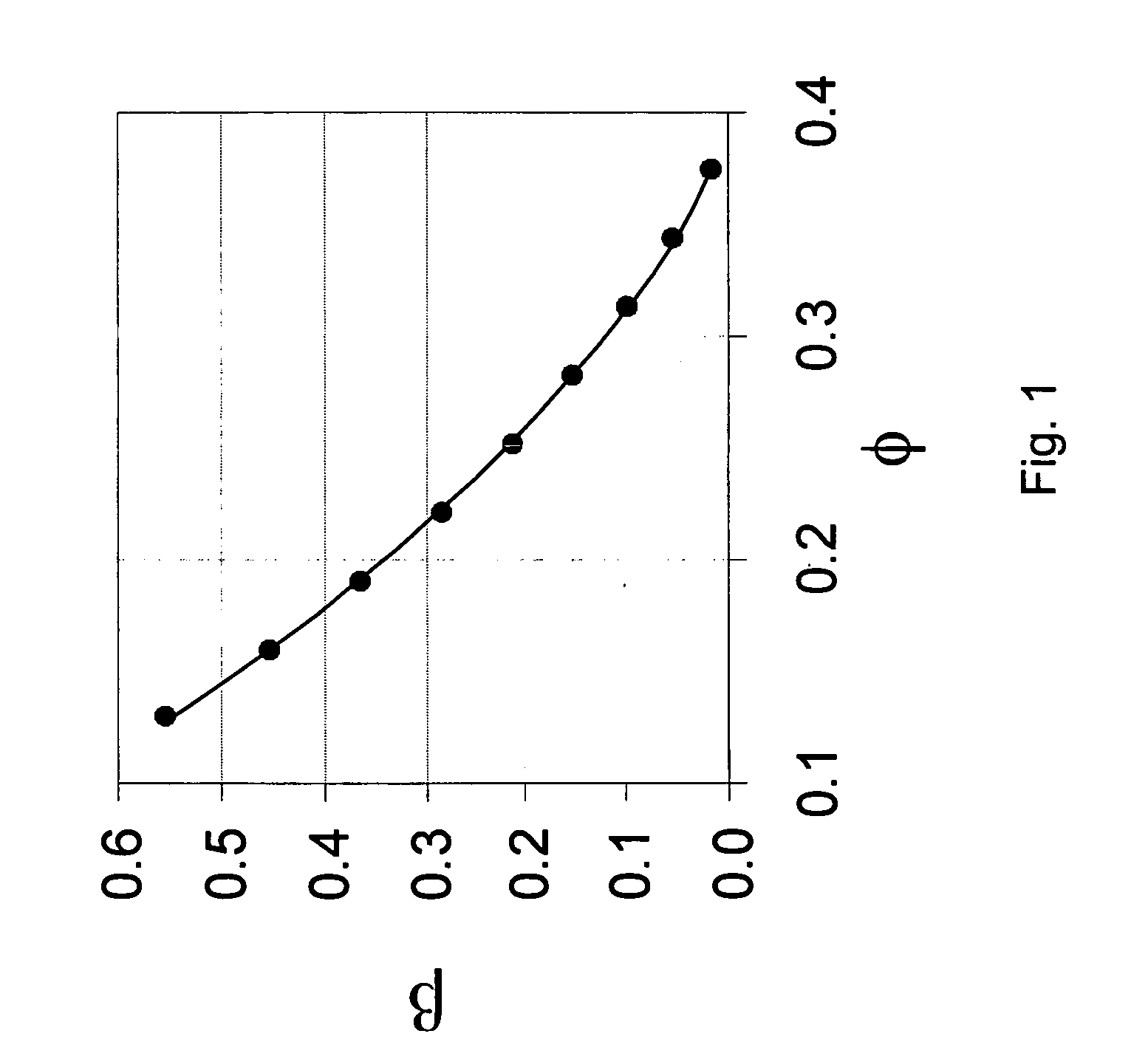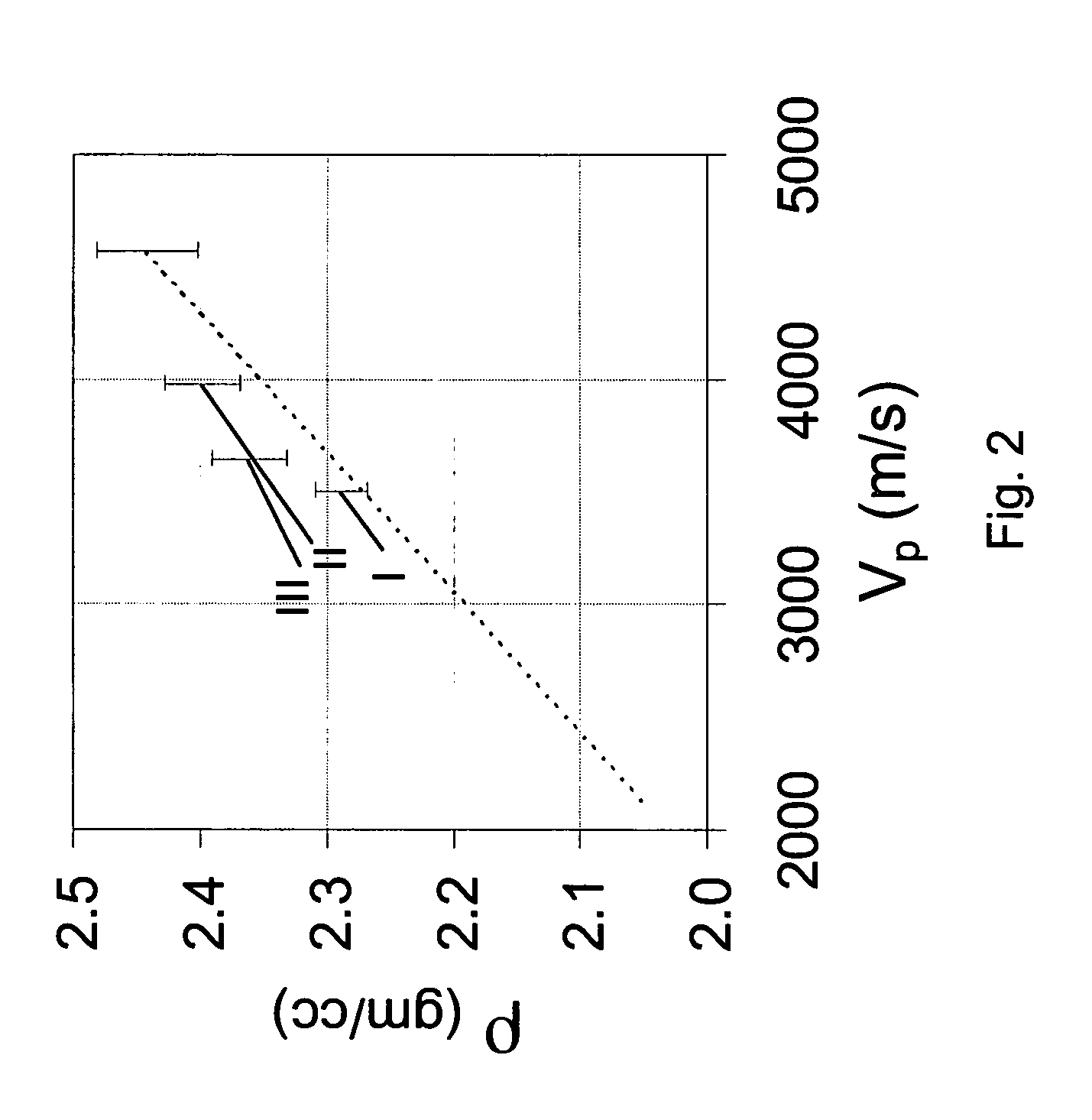Method for improving prediction of the viability of potential petroleum reservoirs
a technology for petroleum reservoirs and viability, applied in the direction of instruments, analogue processes for specific applications, electric/magnetic computing, etc., can solve the problems of affecting the reflection coefficient at the interface between them and the impermeable sealing rocks, unable to accurately predict density, shear velocity and compressional velocity, and difficult to predict permeability from measured seismic data. , to achieve the effect of improving the prediction of permeability and reducing uncertainty
- Summary
- Abstract
- Description
- Claims
- Application Information
AI Technical Summary
Benefits of technology
Problems solved by technology
Method used
Image
Examples
Embodiment Construction
[0041]The present invention can be embodied in many different forms. The disclosure and description of the invention in the drawings and in this description are illustrative and explanatory thereof, and various changes in the sequence of processing steps, of the parameters in the processing and of the process details may be made without departing from the scope of the invention.
[0042]On the basis of equations (1) to (3) above, describing porous rock with a connected pore space, now consider a porous rock in which a second dispersed solid component is introduced with elastic properties ρg*, Kg* and μg* so that the porous rock remains macroscopically homogeneous and isotropic. Suppose some fraction, f, of this second solid component consists of load bearing grains which are substituted in the rock matrix for grains composed of the first solid material whereas the rest of this second solid component exists in the pores but is not attached to the solid matrix of the rock and thus does n...
PUM
 Login to View More
Login to View More Abstract
Description
Claims
Application Information
 Login to View More
Login to View More - R&D
- Intellectual Property
- Life Sciences
- Materials
- Tech Scout
- Unparalleled Data Quality
- Higher Quality Content
- 60% Fewer Hallucinations
Browse by: Latest US Patents, China's latest patents, Technical Efficacy Thesaurus, Application Domain, Technology Topic, Popular Technical Reports.
© 2025 PatSnap. All rights reserved.Legal|Privacy policy|Modern Slavery Act Transparency Statement|Sitemap|About US| Contact US: help@patsnap.com



